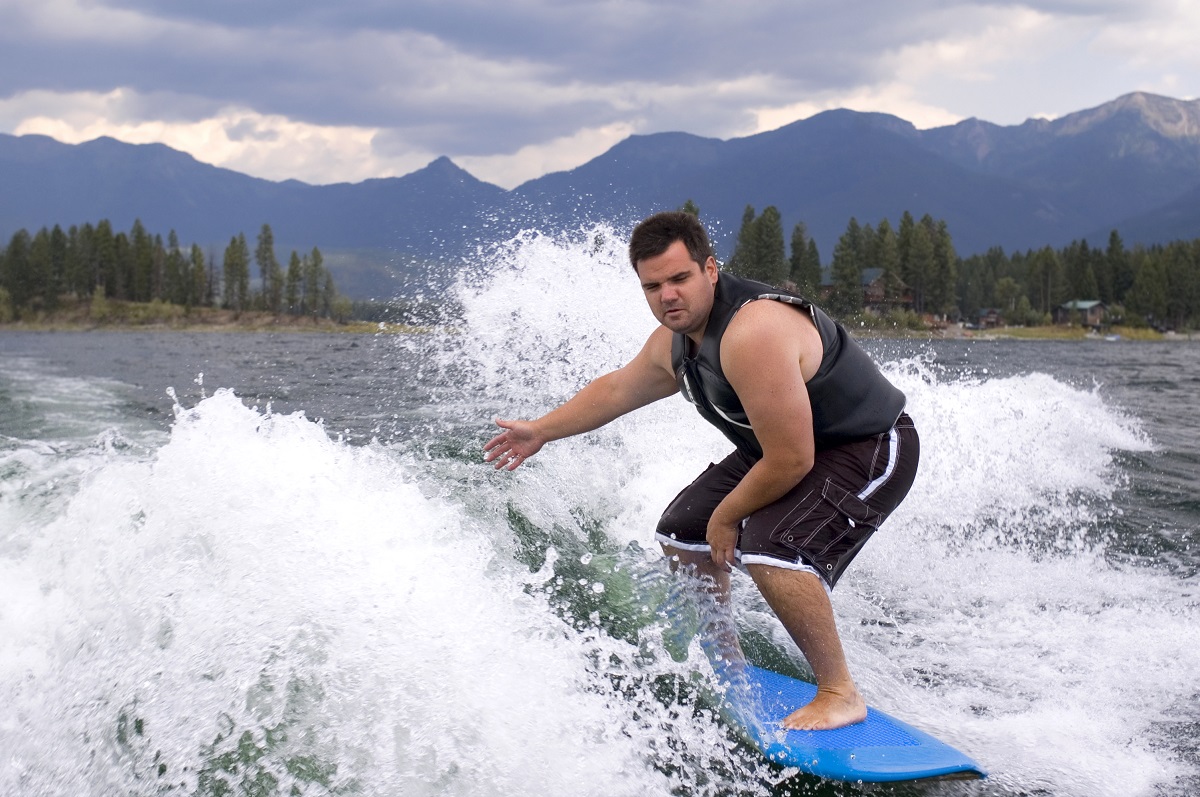Surfing, the exhilarating dance with waves, has a rich and deep-rooted history that transcends time and geography. While it’s a sport today known for its adrenaline-pumping action and a symbol of beach culture, surfing’s origins are as profound and intriguing as the sea itself. This article unravels the captivating tale behind the invention of surfing, journeys through its compelling evolution, and introduces you to some of the world’s most famed surf spots. Ride the wave of surfing’s fascinating past in this article!
Who invented surfing?
Surfing can be traced back to ancient Polynesian and Hawaiian cultures, with the earliest evidence of surfing activity dating back to the 12th century. This makes it one of the oldest participating sports in existence! For centuries, Hawaiians have used boards made of wood and plants called “Papa he’e nalu” (wave sliding) for various reasons, including fishing and recreational activities.
The modern version of surfing was brought to life by the renowned Hawaiians Duke Kahanamoku and George Freeth in 1915. Through their skilled tutelage, surfing gained immense popularity across Australia, Europe, and the U.S., laying the foundations for what is now an international sport.
Some people also credit the invention of the modern surfboard to British expatriate Tom Blake in the 1930s. Blake popularized the hollow wooden boards and brought about a revolution in surfing by inventing new styles and techniques—such as riding prone on a board. He even created surfboard fins, adjustable straps, and the first board leash!
How did ancient cultures practice surfing?
Uncover the ancient roots of surfing in Polynesian cultures
The ancient Polynesian culture, especially in what is now Hawaii, began practicing surfing as early as the 12th century. Surfboards were made from koa wood and varied widely in size and shape—they could range anywhere between 7 to 16 feet long!
Surfing was highly revered in these cultures and associated with strength, courage, confidence, and leadership. It was an integral part of Polynesian spiritual practices, with many rituals and superstitions surrounding the sport.
When the sport was introduced to Europeans, they were mesmerized by its grace and power. The term “surfing” is derived from the 17th-century English term “suff” which means the shoreward surge of the sea!
Did surfing play a significant role in Hawaiian history?
In Hawaiian culture, surfing was also a central part of their spiritual beliefs and folklore. It was a way for Hawaiians to demonstrate strength and courage in the face of adversity. This is why the famous figure of Duke Kahanamoku has become an iconic symbol in Hawaiian history. He helped spread the global reach of surfing and took it from its humble beginnings to the world stage.
Surfing was also a major form of recreation and an important part of Hawaiian culture as well. Surfing was seen as a way for Hawaiian people to come together, relax, and enjoy the moment—it is no wonder why surfing is still so popular with locals and visitors today!
Who was Duke Kahanamoku, and how did he influence modern surfing?
Duke Kahanamoku, the Hawaiian-born swimmer, and surfer, was the pioneer of modern surfing. He is seen as the father of surfing, thanks to his passion for and skill in this sport. He was an Olympic gold medalist who popularized surfing globally and spread its reach to Australia, Europe, and the U.S.
His style of surfing, characterized by graceful yet powerful turns and maneuvers, continues to be emulated by modern surfers today. His charisma and enthusiasm for the sport helped propel it into mainstream culture. He introduced various innovations in board design that made boards more maneuverable and easier to ride, changing how people think about surfing forever.
He also enabled people worldwide to learn and appreciate the sport. Thanks to Duke Kahanamoku, modern surfing remains a popular pastime for many people worldwide.
How have surfboard designs evolved over the centuries?

The modern surfboard results from centuries of experimentation, research, and refinement. The first recorded evidence of surfboards dates back to 1778 in Hawaii, where ancient Polynesians were using boards made from koa wood that could range between 7 to 16 feet long.
During the 1800s and early 1900s, surfing and its associated equipment evolved significantly. The first surfboards were heavy and difficult to use, but new technology made them lighter and easier to maneuver. British expatriate Tom Blake even invented the hollow wooden board in the 1930s!
By the 1950s, foam boards had become popular—they are still favored by many professional surfers today due to their buoyancy and flexibility. Then in the 1960s, shortboards became popular. These boards are more maneuverable and can support more tricks than their longer counterparts.
Surfboards nowadays are constructed using various materials, including foam, fiberglass, and carbon fiber. The length and design of boards can also vary depending on the purpose—from shortboards for performing tricks to longboards for riding larger waves. As the sport of surfing continues to evolve, so too do the materials and designs of surfboards.
How did surfing become a global sensation during the 20th century?

The emergence of modern surfing as a popular sport can be attributed to the efforts of Duke Kahanamoku in the early 20th century. His skilled tutelage and passion for the sport enabled its growth on an international level, particularly in Australia, Europe, and the U.S.
Kahanamoku’s influence and innovations in board design helped propel surfing into the mainstream. The 1960s saw an explosion of interest in surfing with the rise of beach culture and its associated lifestyle. Surfing was considered a part of a cool, laid-back culture that many people wanted to emulate.
The global popularity of surfing continued to grow during the late 20th century and beyond, thanks to dedicated surfers and the emergence of professional surfing competitions. Nowadays, it is a popular sport with people from all walks of life—from young kids to retirees!
Who are the influential surfers that contributed to the sport’s growth?
Surfing has been blessed with numerous influential surfers who have shaped this beloved sport over the years. The list includes names such as Kelly Slater, Mark Richards, Tom Curren, and Layne Beachley.
Kelly Slater is considered by many to be the greatest surfer of all time—he holds 11 World Championship Tour titles and numerous major competition victories. He also helped revolutionize the sport with radical maneuvers like the “air reverse” and “floater.”
Mark Richards is another icon in surfing—he won four consecutive world titles from 1979 to 1982 and is credited for introducing innovative new maneuvers, including the tube ride. Tom Curren’s fluid riding style helped redefine modern surfing and inspired a generation of pro surfers. Layne Beachley is another influential surfer who won seven world titles between 1998 and 2007—she was the first woman to do so!
Famous surf spot across the world

Surfers from all over the world flock to some of the world’s most iconic and renowned surf spots. From the world-famous Pipeline in Hawaii to The Box in Western Australia, these spots are celebrated for their perfect swells and waves that offer an ultimate surfing experience.
The famed “Banzai Pipeline” on Oahu’s North Shore is the top spot for many experienced surfers. It offers some of the best and most powerful waves in the world—something that surfers visit to enjoy!
The “Uluwatu” break in Bali is another famous surf spot known for its beautiful views of the Indian Ocean and consistent waves. The Gold Coast in Queensland, Australia, is also a beloved surf spot due to its sunny shores and waves that range from beginner-friendly swells to more challenging barrels.
The Maldives is another surfers’ paradise with some of the most consistent waves in the world, making it an ideal destination for those looking for a perfect surfing experience. For a more secluded getaway, head to Punta de Lobos in Chile. It is a haven for surfers with its pristine coastline, crystal blue waters, and powerful swells.
Surfing’s captivating history has created an unforgettable adventure that continues to unite people from all walks of life. Whether you are a professional surfer or just learning the ropes, this thrilling sport offers something for everyone. With its deep-rooted history and international appeal, surfing is here to stay! So grab your board and explore the waves—you never know what you’ll discover!
FAQs
Where did surf originate?
Surf originated in ancient Polynesian cultures, with the earliest evidence of surfing activity dating back to 1778. This makes it one of the oldest participating sports in existence.
Why is it called surf?
The term “surfing” is derived from the 17th-century English term “suff.” This term means a shoreward surge of the sea and describes the waves that surfers ride.
Which country has the best surfers?
Australia has one of the highest concentrations of world-class surfers, with names like Kelly Slater, Mark Richards, Tom Curren, and Layne Beachley. However, many talented surfers from all over the world have made their mark on the sport!
Where is known for surfing?
Some of the world’s most renowned surf spots include the Banzai Pipeline in Hawaii, Uluwatu in Bali, The Box in Western Australia, and Punta de Lobos in Chile. These are just a few of the many iconic destinations that have become synonymous with surfing!




